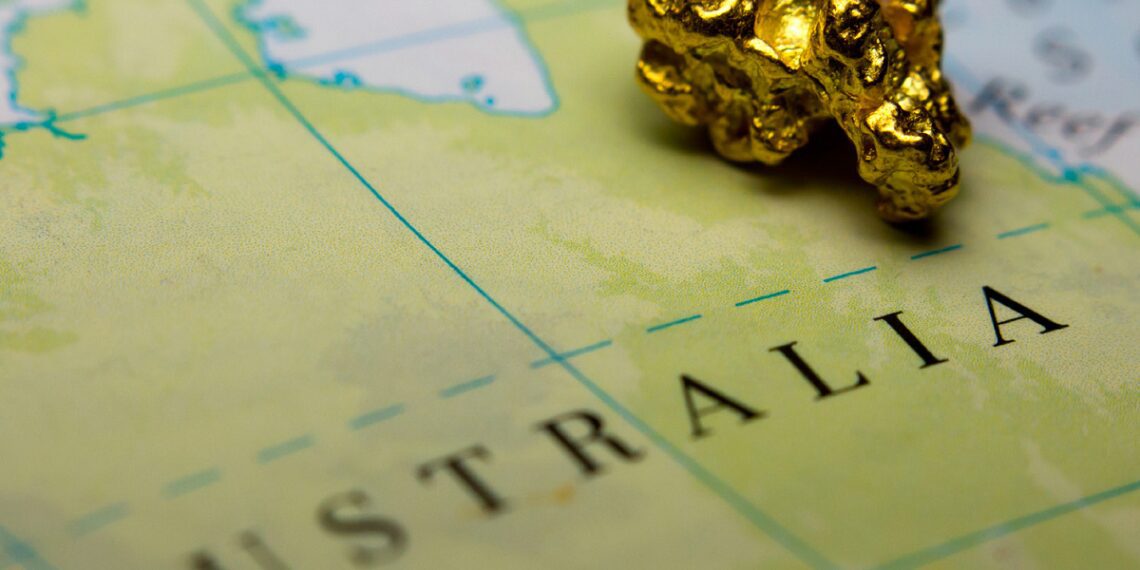Australia has been tipped to potentially threaten China as the world’s leading gold producer over the next few years on the back of a record gold price-led mining boom in the country.
However, that target may be out of reach – for the short term at least – with severe skills shortages impacting both production and exploration activities across the country.
Leading precious metals full-service provider, Kitco, recently forecast that Australia’s production would continue to surge, while at the same time China’s output could be on the decline after being hit by new environmental regulations and the effects of the COVID-19 outbreak.
According to the Australian Government’s Department of Industry, Science, Energy and Resources (DISER) latest “Resources and Energy Quarterly”, Chinese gold mine output is forecast to fall by 2.2% in 2021, to 356 tonnes.
Meanwhile, Australian gold output was forecast to rise by 7.7% to 353 tonnes in 2021, with the nation’s gold growth also been linked to a rise in world gold supply.
Interestingly, Australia exported A$218M of gold to China (excluding Hong Kong) in March 2021, the first time it had exported gold to China since January 2020.
However, the latest “Resources and Energy Quarterly” report also warned that labour and skill shortages are affecting Australia’s gold mine production, which is now estimated to only reach 332 tonnes in 2020–21.
‘Biggest yield in two decades’
Numerous Australian gold explorers in particular have announced significant delays to their drilling operations in recent weeks due to a lack of skilled labour to man the rigs, while assay laboratories continue to be backed up – delaying follow up exploration programmes.
Despite the skills shortage demands, according to the “Resources and Energy Quarterly”, the nation’s gold future is looking particularly bright, boosted by continually strong gold prices, a ramping up of brownfield production, the commissioning of some new projects, and some exciting discoveries.
While short-and-long term gold price forecasts remain mixed, the “Resources and Energy Quarterly” reported Australia’s gold production in fiscal year 2020 reached the country’s biggest yield in two decades.
It is estimated that Australian gold mine production will rise at an average annual rate of 8.3% between 2021–22 and 2022–23. Production of 388 tonnes by 2022–23 will be propelled by both production from new mines and existing mine expansions.
The gold rally is providing to be a significant benefit for Australia’s trade balance, with gold export earnings forecast to reach a record A$29B in 2021–22, before a decline to A$28B in 2022–23, as gold prices ease back.
Australian exploration spending on the rise
The surge in gold interest on the exploration front with a host of new companies joining the rush, while miners old and new are snapping up ground near a number of recent discoveries.
According to the “Resources and Energy Quarterly”, Australia’s exploration expenditure continued to climb in the March quarter 2021, reaching A$359M, up by nearly 32% (or A$87M) year-on-year, driven by high U.S. dollar gold prices.
Gold exploration expenditure accounts for 49% of Australia’s total minerals exploration expenditure (at A$735M). Western Australia remained the focus of gold exploration activity in Australia, accounting for 69% (or A$247M) of total gold exploration expenditure.
Global gold consumption expected to rise in 2022 and 2023
Supporting the future growth of Australian production are forecasts that world gold consumption will grow at an average annual rate of 5.8% in 2022 and 2023, to 4,537 tonnes in 2023. The growth is expected to be largely driven by jewellery consumption, which is forecast to rise by nearly 12% a year in 2022 and 2023, to 2,313 tonnes in 2023. Jewellery demand from China is expected to remain strong, supported by rising consumer sentiment and income. Demand from India is expected to recover in 2022 and 2023, as more people are vaccinated and the economy recovers.
Gold retail investment is expected to help global gold consumption, with demand for gold bars and coins forecast to rise at an average annual rate of 1.0% between 2022 and 2023, to 1,137 tonnes by 2023. This is supported by a forecast pull-back in gold prices.
The official sector is expected to add to gold demand in 2022 and 2023.
Many central banks are expected to shift their focus from accommodative liquidity requirements — to support economic growth during the COVID-19 pandemic — to reserves diversification — to help protect their wealth. As a result, the pace of central bank gold buying is forecast to increase by an average 12% a year over the outlook period, reaching 440 tonnes in 2023 threaten China as the world’s leading gold producer this year and forecast that by 2026, the country’s production volume will reach 418 tonnes.
The value of gold exported from Australia is also likely to increase, exceeding A$26B in 2020.
Gold prices expected to fall in 2022 and 2023
The one dark cloud for miners are predictions that after 2021, gold prices are likely to fall by an average 4.0% a year, to US$1,634 an ounce in 2023, due to the recovery of the global economy and a higher interest rate environment.
According to DISER’s quarterly update, the prospect of rising real bond yields is likely to be a major factor in curbing institutional investment demand for gold. With (real) interest rates increasing, the opportunity cost of holding gold is high, lowering its attractiveness as an investment asset.












